PMSF
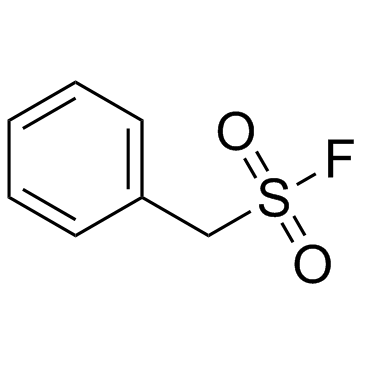
PMSF structure
|
Common Name | PMSF | ||
|---|---|---|---|---|
| CAS Number | 329-98-6 | Molecular Weight | 174.193 | |
| Density | 1.3±0.1 g/cm3 | Boiling Point | 285.7±19.0 °C at 760 mmHg | |
| Molecular Formula | C7H7FO2S | Melting Point | 92-95 °C | |
| MSDS | Chinese USA | Flash Point | 126.6±21.5 °C | |
| Symbol |


GHS05, GHS06 |
Signal Word | Danger | |
Use of PMSFPMSF is an irreversible serine/cysteine protease inhibitor commonly used in the preparation of cell lysates. |
| Name | phenylmethanesulfonyl fluoride |
|---|---|
| Synonym | More Synonyms |
| Description | PMSF is an irreversible serine/cysteine protease inhibitor commonly used in the preparation of cell lysates. |
|---|---|
| Related Catalog | |
| In Vitro | PMSF (2 mM) inhibits carbachol-stimulated inositol phosphate accumulation in the presence of Li+ by only 15%-19%. PMSF inhibition of phosphoinositide turnover is due to one or more steps following phosphoinositide breakdown[1]. PMSF inhibits the acylation of the inositol residue of GPI intermediates in bloodstream form T. brucei. PMSF inhihits the formntion of glycolipid C but does not inhibit fatty acid remodeling in vitro. PMSF inhihits GPI acylation and ethanolamine phosphatp addition in procyclic trypanosomes but not in Hela cells[2]. |
| In Vivo | PMSF (0.1 mL/10 g b.wt, i.p.) produces antinociception as indicated by the dose-responsive increase in % MPE in the tail-flick latency evaluation, but fails to produce a clear dose-responsive inhibition of locomotion. Mice receiving i.p. injections of PMSF exhibit cannabinoid effects that includes antinociception, hypothermia and immobility with ED50 values of 86, 224 and 206 mg/kg, respectively. PMSF (30 mg/kg) pretreatment potentiates the effects of anandamide on tail-flick response (antinociception), spontaneous activity and mobility by 5-, 10- and 8-fold, respectively[3]. |
| Animal Admin | Male ICR mice weighing 18 to 25 g are used in the assay. PMSF is dissolved in sesame oil and administered i.p. at a volume of 0.1 mL/10 g b.wt. PMSF is always administered 10 min before i.v. anandamide or vehicle injections. Mice are acclimated to the evaluation room overnight without interruption of food or water. After i.v. anandamide or vehicle administration each animal is evaluated as follows: tail-flick latency (antinociception) response at 5 min and spontaneous (locomotor) activity at 5 to 15 min; or core (rectal) temperature at 5 min and ring-immobility (catalepsy) at 5 to 10 min. |
| References |
| Density | 1.3±0.1 g/cm3 |
|---|---|
| Boiling Point | 285.7±19.0 °C at 760 mmHg |
| Melting Point | 92-95 °C |
| Molecular Formula | C7H7FO2S |
| Molecular Weight | 174.193 |
| Flash Point | 126.6±21.5 °C |
| Exact Mass | 174.015076 |
| PSA | 42.52000 |
| LogP | 2.33 |
| Vapour Pressure | 0.0±0.6 mmHg at 25°C |
| Index of Refraction | 1.522 |
| InChIKey | YBYRMVIVWMBXKQ-UHFFFAOYSA-N |
| SMILES | O=S(=O)(F)Cc1ccccc1 |
| Storage condition | 2-8°C |
| Water Solubility | hydrolysis |
Synonym:Phenylmethylsulfonyl fluoride; PMSF; Benzenemethanesulfonyl fluorid Section 2 - COMPOSITION, INFORMATION ON INGREDIENTS
Risk Phrases: 34 Section 3 - HAZARDS IDENTIFICATION EMERGENCY OVERVIEW
Causes burns.Moisture sensitive.Corrosive. Potential Health Effects Eye: Causes eye burns. Contact with eyes may cause severe irritation, and possible eye burns. Skin: Causes skin burns. Ingestion: May cause severe and permanent damage to the digestive tract. Causes gastrointestinal tract burns. Inhalation: May cause severe irritation of the respiratory tract with sore throat, coughing, shortness of breath and delayed lung edema. Causes chemical burns to the respiratory tract. Chronic: No information found. Section 4 - FIRST AID MEASURES Eyes: Immediately flush eyes with plenty of water for at least 15 minutes, occasionally lifting the upper and lower eyelids. Get medical aid immediately. Do NOT allow victim to rub eyes or keep eyes closed. Extensive irrigation with water is required (at least 30 minutes). Skin: Get medical aid immediately. Flush skin with plenty of water for at least 15 minutes while removing contaminated clothing and shoes. Wash clothing before reuse. Destroy contaminated shoes. Ingestion: Do not induce vomiting. If victim is conscious and alert, give 2-4 cupfuls of milk or water. Never give anything by mouth to an unconscious person. Get medical aid immediately. Inhalation: Get medical aid immediately. Remove from exposure and move to fresh air immediately. If breathing is difficult, give oxygen. Do NOT use mouth-to-mouth resuscitation. If breathing has ceased apply artificial respiration using oxygen and a suitable mechanical device such as a bag and a mask. Notes to Physician: Antidote: None reported. Section 5 - FIRE FIGHTING MEASURES General Information: As in any fire, wear a self-contained breathing apparatus in pressure-demand, MSHA/NIOSH (approved or equivalent), and full protective gear. During a fire, irritating and highly toxic gases may be generated by thermal decomposition or combustion. Extinguishing Media: Do NOT use water directly on fire. Use foam, dry chemical, or carbon dioxide. Section 6 - ACCIDENTAL RELEASE MEASURES General Information: Use proper personal protective equipment as indicated in Section 8. Spills/Leaks: Clean up spills immediately, observing precautions in the Protective Equipment section. Sweep up, then place into a suitable container for disposal. Provide ventilation. Section 7 - HANDLING and STORAGE Handling: Wash thoroughly after handling. Do not get in eyes, on skin, or on clothing. Keep container tightly closed. Do not ingest or inhale. Use with adequate ventilation. Discard contaminated shoes. Storage: Keep container closed when not in use. Store in a cool, dry, well-ventilated area away from incompatible substances. Corrosives area. Keep containers tightly closed. Section 8 - EXPOSURE CONTROLS, PERSONAL PROTECTION Engineering Controls: Facilities storing or utilizing this material should be equipped with an eyewash facility and a safety shower. Use adequate general or local exhaust ventilation to keep airborne concentrations below the permissible exposure limits. Exposure Limits CAS# 329-98-6: United States OSHA: 2.5 mg/m3 TWA (as F) (listed under Fluorides Personal Protective Equipment Eyes: Wear appropriate protective eyeglasses or chemical safety goggles as described by OSHA's eye and face protection regulations in 29 CFR 1910.133 or European Standard EN166. Skin: Wear appropriate protective gloves to prevent skin exposure. Clothing: Wear appropriate protective clothing to prevent skin exposure. Respirators: Follow the OSHA respirator regulations found in 29 CFR 1910.134 or European Standard EN 149. Use a NIOSH/MSHA or European Standard EN 149 approved respirator if exposure limits are exceeded or if irritation or other symptoms are experienced. Section 9 - PHYSICAL AND CHEMICAL PROPERTIES Physical State: Needles Color: white Odor: None reported. pH: Not available. Vapor Pressure: Not available. Viscosity: Not available. Boiling Point: Not available. Freezing/Melting Point: 92.00 - 94.00 deg C Autoignition Temperature: Not available. Flash Point: Not available. Explosion Limits, lower: Not available. Explosion Limits, upper: Not available. Decomposition Temperature: Solubility in water: hydrolysis Specific Gravity/Density: Molecular Formula: C7H7FO2S Molecular Weight: 174.19 Section 10 - STABILITY AND REACTIVITY Chemical Stability: Stable under normal temperatures and pressures. Conditions to Avoid: Incompatible materials, exposure to moist air or water. Incompatibilities with Other Materials: Strong oxidizing agents, strong bases, moisture. Hazardous Decomposition Products: Carbon monoxide, oxides of sulfur, carbon dioxide, hydrogen fluoride gas. Hazardous Polymerization: Has not been reported. Section 11 - TOXICOLOGICAL INFORMATION RTECS#: CAS# 329-98-6: XT8040000 LD50/LC50: CAS# 329-98-6: Oral, mouse: LD50 = 200 mg/kg. Carcinogenicity: alpha-Toluenesulfonyl fluoride - Not listed by ACGIH, IARC, or NTP. Other: See actual entry in RTECS for complete information. Section 12 - ECOLOGICAL INFORMATION Section 13 - DISPOSAL CONSIDERATIONS Dispose of in a manner consistent with federal, state, and local regulations. Section 14 - TRANSPORT INFORMATION IATA Shipping Name: CORROSIVE SOLID, N.O.S.* Hazard Class: 8 UN Number: 1759 Packing Group: II IMO Shipping Name: CORROSIVE SOLID, N.O.S. Hazard Class: 8 UN Number: 1759 Packing Group: II RID/ADR Shipping Name: CORROSIVE SOLID, N.O.S. Hazard Class: 8 UN Number: 1759 Packing group: II Section 15 - REGULATORY INFORMATION European/International Regulations European Labeling in Accordance with EC Directives Hazard Symbols: C Risk Phrases: R 34 Causes burns. Safety Phrases: S 24/25 Avoid contact with skin and eyes. WGK (Water Danger/Protection) CAS# 329-98-6: No information available. Canada CAS# 329-98-6 is listed on Canada's DSL List. CAS# 329-98-6 is not listed on Canada's Ingredient Disclosure List. US FEDERAL TSCA CAS# 329-98-6 is listed on the TSCA inventory. SECTION 16 - ADDITIONAL INFORMATION N/A |
CHEMICAL IDENTIFICATION
HEALTH HAZARD DATAACUTE TOXICITY DATA
|
| Symbol |


GHS05, GHS06 |
|---|---|
| Signal Word | Danger |
| Hazard Statements | H301-H314 |
| Precautionary Statements | P280-P305 + P351 + P338-P310 |
| Personal Protective Equipment | Eyeshields;Faceshields;full-face particle respirator type N100 (US);Gloves;respirator cartridge type N100 (US);type P1 (EN143) respirator filter;type P2 (EN 143) respirator cartridges;type P3 (EN 143) respirator cartridges |
| Hazard Codes | T:Toxic; |
| Risk Phrases | R25;R34 |
| Safety Phrases | S7-S16-S45-S36/37/39-S28A-S26 |
| RIDADR | UN 3261 8/PG 2 |
| WGK Germany | 3 |
| RTECS | XT8050000 |
| Packaging Group | III |
| Hazard Class | 8 |
| HS Code | 2904909090 |
| Precursor 2 | |
|---|---|
| DownStream 10 | |
| HS Code | 2904909090 |
|---|---|
| Summary | HS:2904909090 sulphonated, nitrated or nitrosated derivatives of hydrocarbons, whether or not halogenated VAT:17.0% Tax rebate rate:9.0% Supervision conditions:none MFN tariff:5.5% General tariff:30.0% |
|
Immunomodulation by the Pseudomonas syringae HopZ type III effector family in Arabidopsis.
PLoS ONE 9(12) , e116152, (2014) Pseudomonas syringae employs a type III secretion system to inject 20-30 different type III effector (T3SE) proteins into plant host cells. A major role of T3SEs is to suppress plant immune responses ... |
|
|
Assembly and structure of Lys33-linked polyubiquitin reveals distinct conformations.
Biochem. J. 467(2) , 345-52, (2015) Ubiquitylation regulates a multitude of biological processes and this versatility stems from the ability of ubiquitin (Ub) to form topologically different polymers of eight different linkage types. Wh... |
|
|
A survey of the interactome of Kaposi's sarcoma-associated herpesvirus ORF45 revealed its binding to viral ORF33 and cellular USP7, resulting in stabilization of ORF33 that is required for production of progeny viruses.
J. Virol. 89(9) , 4918-31, (2015) The ORF45 protein of Kaposi's sarcoma-associated herpesvirus (KSHV) is a gammaherpesvirus-specific immediate-early tegument protein. Our previous studies have revealed its crucial roles in both early ... |
| α-Toluenesulfonyl fluoride |
| Benzenemethanesulfonyl fluoride |
| Phenylmethanesulfonyl fluoride (PMSF) |
| Phenylmethylsulfonyl fluoride |
| Phenylmethanesulfonyl fluoride |
| Phenylmethanesulphonyl fluoride |
| Fluoride, Phenylmethanesulfonyl |
| phenyl methane sulfonyl fluoride |
| phenylmethyl-sulfonyl fluoride |
| PMSF |
| EINECS 206-350-2 |
| Benzylsulfonyl Fluoride |
| Benzylsulphonyl fluoride |
| MFCD00007421 |
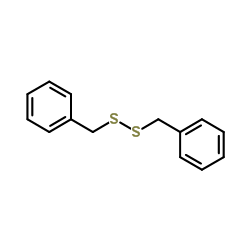

![1-morpholin-4-yl-8-phenyl-7$l^{6}-thiabicyclo[4.2.0]octane 7,7-dioxide structure](https://image.chemsrc.com/caspic/211/19158-30-6.png) CAS#:19158-30-6
CAS#:19158-30-6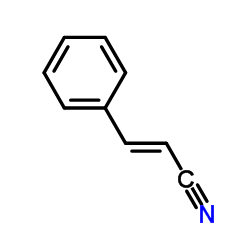 CAS#:1885-38-7
CAS#:1885-38-7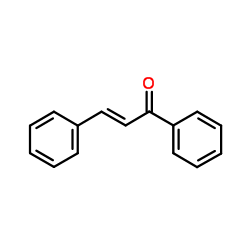 CAS#:614-47-1
CAS#:614-47-1 CAS#:1896-62-4
CAS#:1896-62-4 CAS#:23566-06-5
CAS#:23566-06-5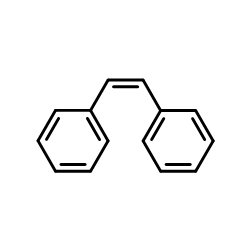 CAS#:645-49-8
CAS#:645-49-8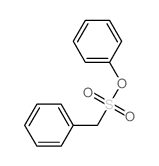 CAS#:10271-81-5
CAS#:10271-81-5 CAS#:100-87-8
CAS#:100-87-8 CAS#:1608-31-7
CAS#:1608-31-7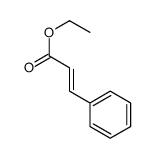 CAS#:4192-77-2
CAS#:4192-77-2
